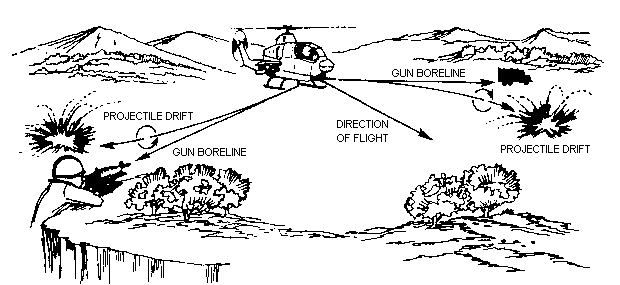I would agree there is horizontal motion of the bullet while it is in the chamber, but not after it leaves the muzzle.When you swing your rifle it most definitely imparts horizontal motion to the bullet. It does so at the angular rate that you are swinging the gun. It doesn't curve a bullet. It's an actual horizontal vector. You can prove this to yourself by swinging across a stationary target and pulling the trigger when you pass by it. You'll miss it unless you stop to pull the trigger.
The necessity of the "swing" when bird hunting or shooting at a running animal is to keep the muzzle (sights) pointing at the target when the trigger is pulled. The follow through is just a technique to be sure you don't stop the swing before the powder ignites.

